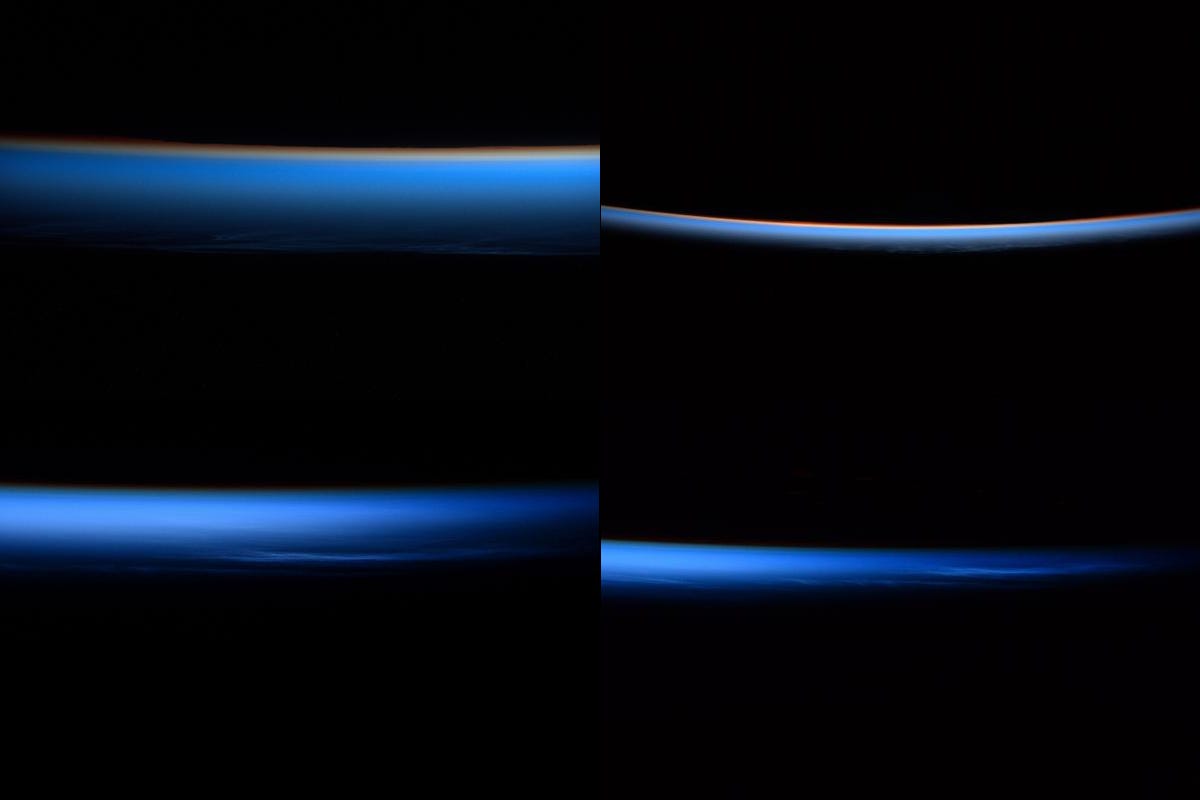Astronaut Samantha Cristoforetti's best photos of Earth from space
During her months aboard the International Space Station, European Space Agency astronaut Samantha Cristoforetti took a whole bunch of pics. Here are our favourites.

Noctilucent clouds
These clouds were spotted by Cristoforetti on day 195 of her 199 days in space (the longest spaceflight ever achieved by a woman). They're "noctilucent" clouds -- the highest clouds in the Earth's atmosphere, thin wisps on the edges of upper atmosphere polar mesospheric clouds. They glow brilliantly at deep dusk.
The colourful Caribbean
The Caribbean from space is a stunning array of colours, as sudden peaks and troughs around the islands give hue to the blue waters -- from deepest royal blue to pale turquoise. You can see why pirates would need accurate charts of the depths.
The Dead Sea
The deepest hypersaline lake in the world, with a surface 429 metres (1,407 feet) below sea level, is the Dead Sea, located on the border between Palestine, Israel and Jordan. It's so salty that nothing can live in it and the density of salt is so high that anyone can easily float on its surface. It's also, sadly, receding: potable water that would normally flow into the sea has been used by human colonies nearby, making much of the shoreline unsafe.
Europe, with lightning
The neuronlike glow of connected cities from space: Athens, Greece, glowing brightly in the lower middle, with the lower section of the boot of Italy in the upper left. Lightning flashes in the upper right over the very western corner of Romania.
Viva Venezuela!
Cirrus and altocumulus clouds over the coast of Venezuela, with the sun turning the water into a brightly gleaming mirror.
Rising sun
The ISS travels at a pretty high speed: 7.66 kilometres per second (27,600 km/h, 17,160 mph), at an oblique angle around the Earth. This means that astronauts on the station see the sun rise and set 15 or 16 times every 24 hours. If you love sunrise and sunset beyond all reason, you might want to think about becoming an astronaut.
Blue marble
Many astronauts report, upon seeing the beauty of Earth laid out, an overwhelming feeling of love and kinship with other humans. This is known as the overview effect.
In the deserts of Saudi Arabia
This is Jubbah, a small town in the desert of Saudi Arabia, north and east from capital city Riyadh. Originally built some 7,000 to 9,000 years ago, Jubbah is home to some curious ruins and relics. It's one of the most important locations for rock-art carvings in the Middle East. Its carvings include petroglyphs and ancient inscriptions in Thamudic, a pre-Islamic North Arabic dialect.
This image is upside down. North was facing downward when Cristoforetti took it.
Clouds
The variety of clouds, clockwise from upper left: a Karman vortex street, usually caused by the separation of wind flow around a mountain top, creating a series of vortices in the clouds; stratocumulus castellanus; cirrocumulus castellanus; and clouds pulling together into the spiral rain bands of a hurricane.
Darfur, Sudan
The oceans cover 71 percent of the Earth's surface, so many photos of the Earth from space show water. This photo shows the opposite: the desert of Darfur, in the North African republic of Sudan.
Earth patterns
Patterns of the Earth, clockwise from top left: Qasr al-Farafra in western Egypt; west of the Exuma Trough in the Bahamas; the Tibesti mountain range in the northwest of Chad, North Africa; the desert in the south of Saudi Arabia, near the Yemen border.
Circles of fertility
This is Cristalina in the state of Goias, Brazil, south of the capital, Brasilia. The circles are created by centre-pivot irrigation, where sprinkler equipment rotates around a centre pivot, creating a circular area that gets watered.
Dextre and aurora
In the foreground, the Canadian-built robotic maintenance arm, Dextre, against a dramatic backdrop of glowing green aurora arcing over the horizon.
A glowing galaxy of fishing boats
North of the Falkland Islands, fishing boats glow in the Argentine Basin on the west edge of the South Atlantic Sea. Clouds provide a veil through which the coloured lights diffuse.
The eye of a typhoon
The deep eye of Typhoon Maysak, an unusually intense cyclone for the 2015 Pacific typhoon season. It affected both the Philippines and Micronesia, developing around March 26-28 and intensifying into a supertyphoon on March 31, when this photograph was taken.
Italy
Cristoforetti's home country, glowing golden at night through a soft layer of cloud.
Volcano from space
Emi Koussi, on the southeast of the Tibesti Mountains in Chad, North Africa, is a volcano, but no longer active. It's an uncommon pyroclastic shield volcano -- that is, a type of volcano formed by magma.
The Terminator
Not the kind that wants to kill Sarah Connor. The terminator -- also known as "the twilight zone" -- is the moving line that separates the light side of a planet from the dark. Who knew that dusk was so badass.

